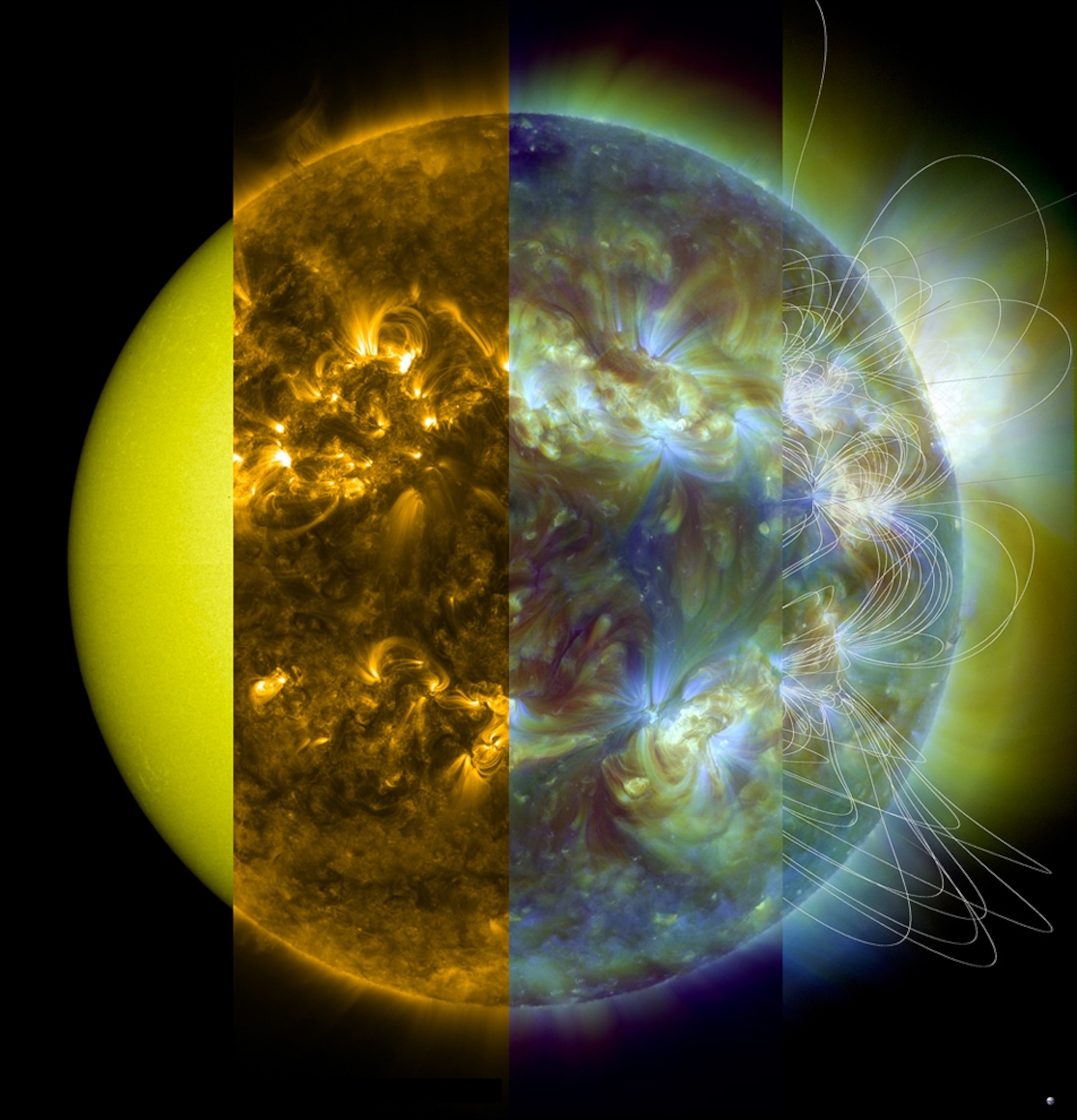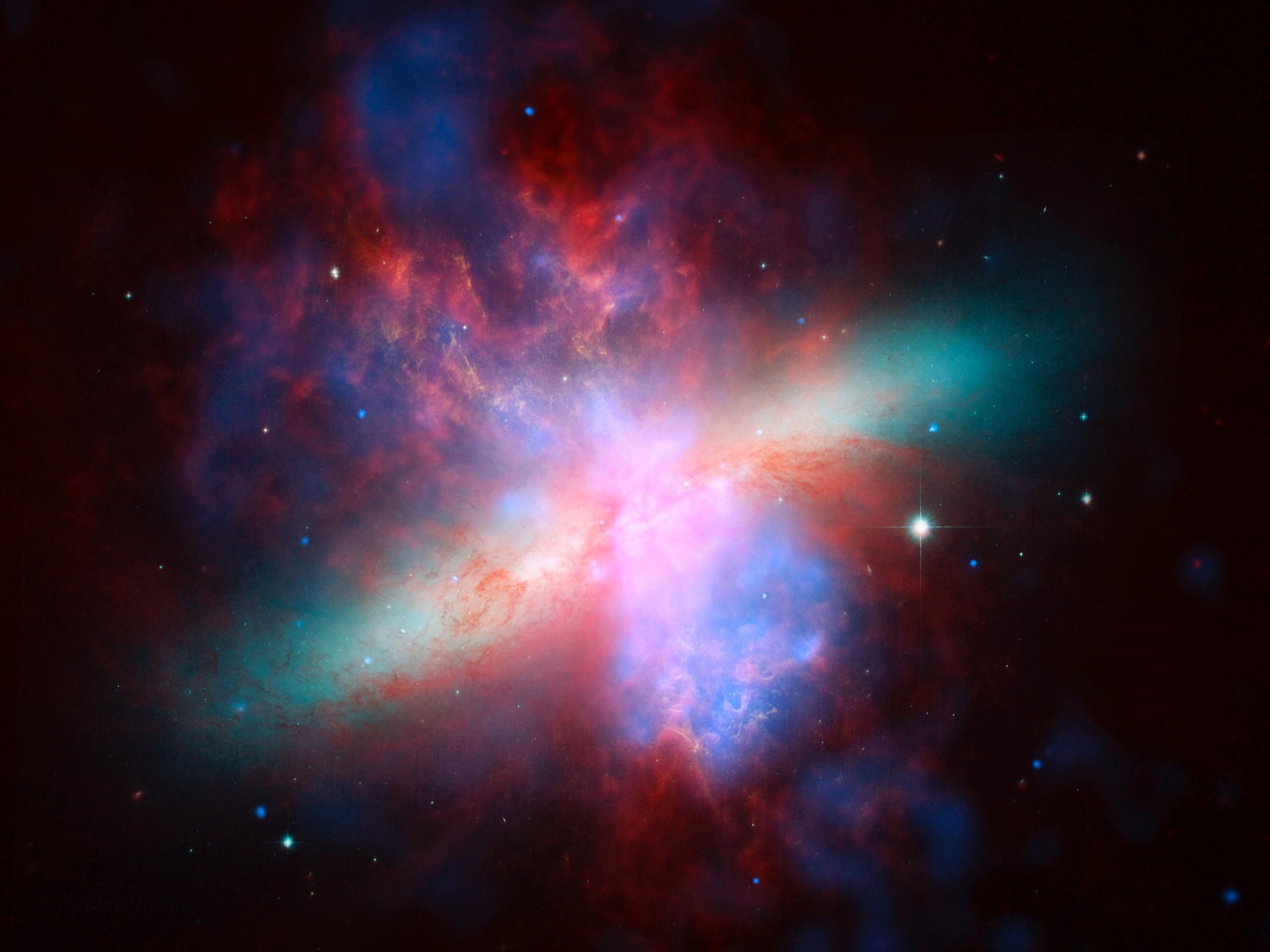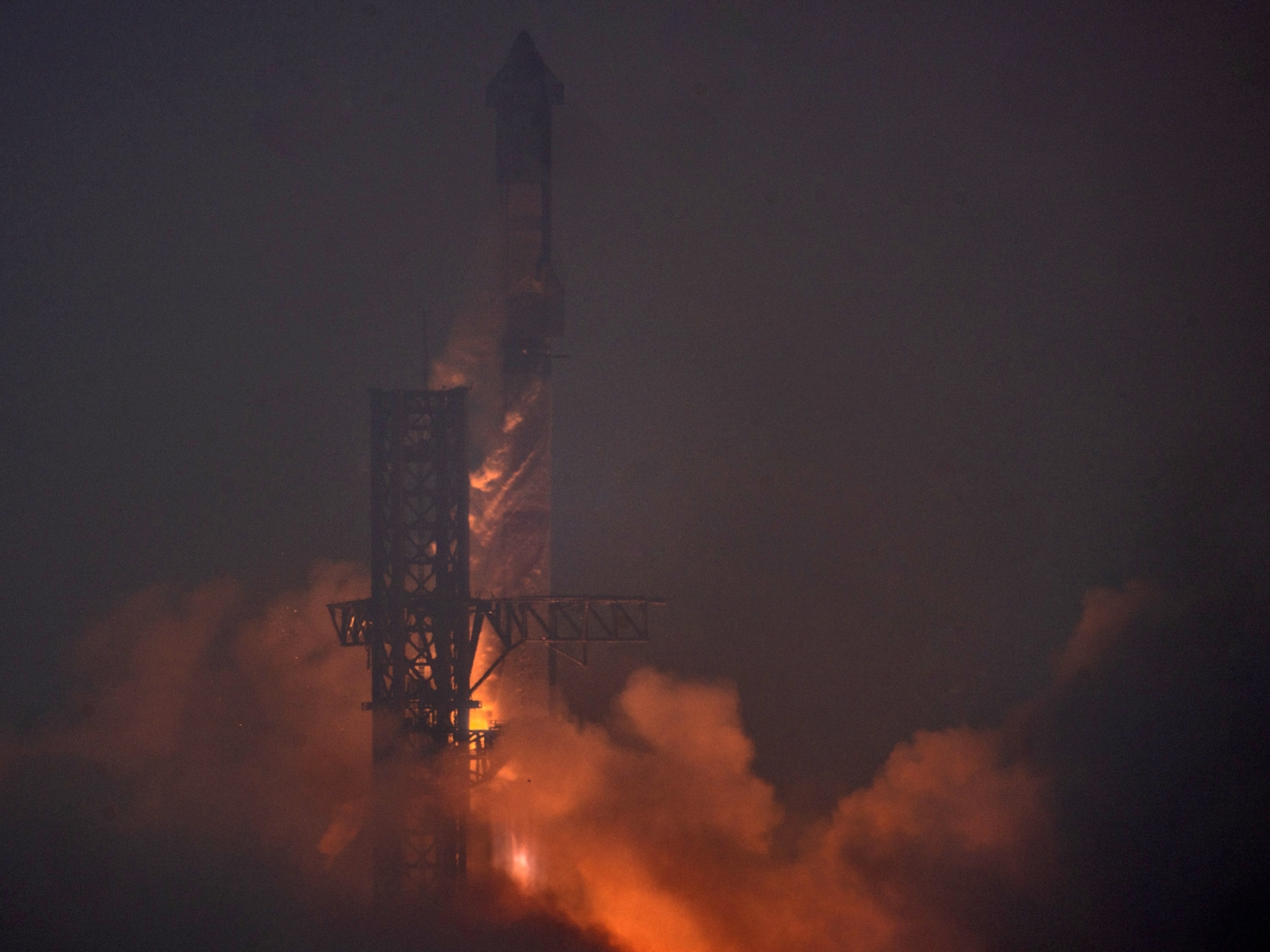From our vantage point on Earth, the sun appears to be an unchanging orb. But in reality the solar surface is constantly churning, and its belches and sputterings can cause powerful storms that affect life on Earth.
Magnetic activity can suspend dense clouds of charged, superheated gas—mostly hydrogen and helium—called plasma above the sun's surface. Sometimes these solar prominences can erupt, forming loops and columns that can easily reach the height of several Earths stacked on top of each other.
The turbulent solar surface can also be dotted by sunspots—dark, planet-size blemishes that denote tangled knots of intense magnetic activity. Sunspots can linger for days or months, and they expand and contract as they rove in packs across the sun's surface. Solar astronomers in the 19th century noticed that the number of sunspots increased and decreased in a predictable pattern known as a solar cycle. This cycle is driven by the reversal of the sun's magnetic north and south poles, an event that happens about every 11 years. The period of highest sunspot activity is called the solar maximum, while the period of least activity is the solar minimum.
Sunspots are the starting points of explosive eruptions known as solar flares and huge belches of charged particles called coronal mass ejections, or CMEs. While solar flares and CMEs often occur together, scientists think they are separate phenomena.
Solar flares are sudden bursts of radiation from just above the surface of the sun. Flares are accompanied by the ejection of electrons and charged atoms into space. These brilliant eruptions are triggered by the rapid release of pent up magnetic energy and typically occur around sunspots, because that's where solar magnetic field lines are most likely to snap. Solar flares are usually classified as A, B, C, M or X, with an X-class flare being the most powerful.
By contrast, coronal mass ejections are mammoth clouds of charged particles that get hurled through the sun's upper atmosphere, or corona, at millions of miles an hour. A single CME contains billions of tons of charged particles and can bloom to be larger than the sun itself.
Both solar flares and CMEs can affect Earth. A flare can infuse Earth's upper atmosphere with powerful radiation and charged particles, with impacts ranging from enhanced auroras to geomagnetic storms that can damage satellites. The radiation from a flare can also endanger astronauts in orbit.
CMEs can be even more disruptive. When a CME is pointed at Earth, the shock wave that precedes it slams into and deforms Earth's magnetic shield, called the magnetosphere. This can create surges of electric current capable of disrupting satellites in orbit and even knocking out power grids on the planet's surface.
Technology isn't the only thing that's vulnerable to solar activity. There's also evidence that life on Earth could be impacted by happenings on the sun. For example, a period of unusually low sunspot activity from 1645 to 1715 known as the Maunder Minimum corresponds to the Little Ice Age in Europe, which was marked by colder weather, heavier snowfall, and the freezing of large bodies of water such as the Thames River in the U.K. and the Baltic Sea.






